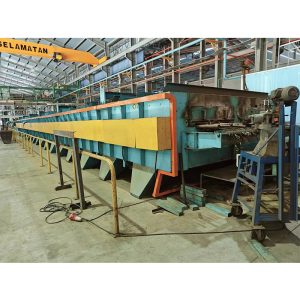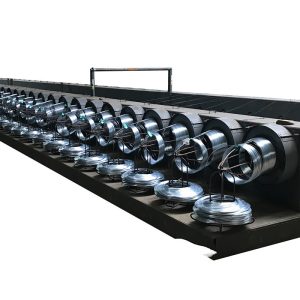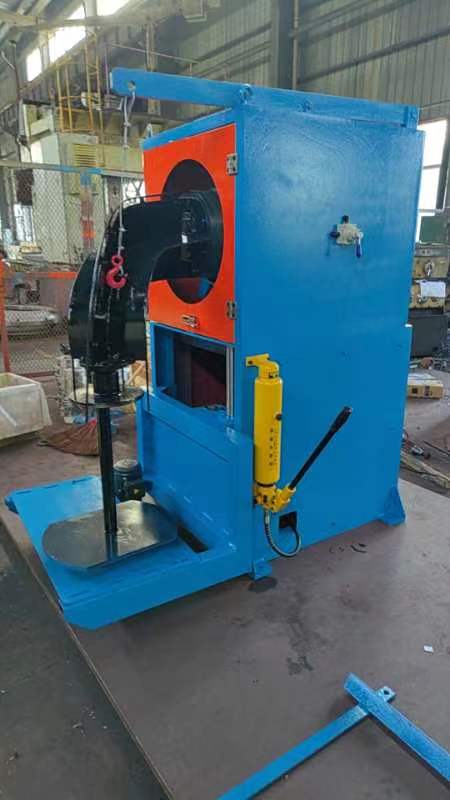Key Components of a GI Wire Production Line
A GI wire production line is a crucial component in the manufacturing process of galvanized iron wires. This production line consists of several key components that work together to produce high-quality GI wires efficiently. Understanding the key components of a GI wire production line is essential for anyone involved in the wire manufacturing industry.
One of the primary components of a GI wire production line is the wire drawing machine. This machine is responsible for pulling the raw material, usually steel wire rods, through a series of dies to reduce its diameter and increase its length. The wire drawing machine plays a crucial role in shaping the wire and ensuring its uniformity and consistency. It is essential to have a high-quality wire drawing machine to produce GI wires of the desired specifications.
Another important component of a GI wire production line is the galvanizing bath. This is where the drawn wire is immersed in molten zinc to create a protective coating on its surface. The galvanizing process helps prevent corrosion and rust, making the GI wire suitable for various applications, including fencing, construction, and electrical wiring. The quality of the galvanizing bath and the control of the galvanizing process are critical factors in determining the quality of the GI wire produced.
In addition to the Wire Drawing Machine For Zinc Coating GI Wire, a GI wire production line also includes various auxiliary equipment, such as wire straightening machines, spooling machines, and cutting machines. These machines help streamline the production process and ensure the efficient handling of the GI wires. Proper maintenance and calibration of these auxiliary machines are essential to ensure the smooth operation of the production line.

Furthermore, a GI wire production line is equipped with quality control systems to monitor the production process and ensure that the GI wires meet the required specifications. These systems may include sensors, gauges, and software programs that track various parameters, such as wire diameter, coating thickness, and tensile strength. By continuously monitoring and adjusting these parameters, manufacturers can produce high-quality GI wires consistently.
Moreover, safety measures are an integral part of a GI wire production line. Workers operating the machinery must adhere to strict safety protocols to prevent accidents and injuries. Proper training, protective gear, and regular maintenance of the equipment are essential to create a safe working environment in the production facility.
In conclusion, a GI wire production line comprises several key components that work together to produce high-quality galvanized iron wires efficiently. From the wire drawing machine to the galvanizing bath, auxiliary equipment, quality control systems, and safety measures, each component plays a crucial role in the manufacturing process. Understanding the key components of a GI wire production line is essential for manufacturers looking to produce top-quality GI wires for various applications. By investing in high-quality equipment, implementing strict quality control measures, and prioritizing safety, manufacturers can ensure the success of their GI wire production line.
How to Maintain and Troubleshoot a GI Wire Production Line
A GI wire production line is a crucial component in the manufacturing process of galvanized iron wires. To ensure smooth and efficient operation, it is essential to properly maintain and troubleshoot the production line. In this article, we will discuss some key tips and techniques for maintaining and troubleshooting a GI wire production line.

Regular maintenance is essential to keep a GI wire production line running smoothly. One of the most important maintenance tasks is to regularly inspect and clean the machinery. Dust, debris, and other contaminants can build up on the equipment over time, leading to decreased efficiency and potential breakdowns. Regular cleaning can help prevent these issues and prolong the life of the machinery.
In addition to cleaning, it is important to regularly lubricate moving parts of the production line. Proper lubrication can help reduce friction and wear on the machinery, leading to smoother operation and fewer breakdowns. It is important to use the correct type of lubricant for each part of the production line to ensure optimal performance.
Another important aspect of maintenance is to regularly inspect and replace worn or damaged parts. Over time, parts of the production line can become worn or damaged, leading to decreased efficiency and potential breakdowns. Regular inspections can help identify these issues early on and prevent more serious problems from occurring. It is important to keep a stock of spare parts on hand to quickly replace any worn or damaged components.
In addition to regular maintenance, it is important to troubleshoot any issues that may arise with the GI wire production line. One common issue that can occur is uneven wire tension. This can lead to inconsistent wire thickness and quality. To troubleshoot this issue, it is important to check the tension settings on the machinery and adjust them as needed. It may also be necessary to inspect and replace any worn or damaged parts that may be causing the issue.
Another common issue that can occur is wire breakage. This can be caused by a variety of factors, including improper tension settings, worn or damaged parts, or operator error. To troubleshoot this issue, it is important to carefully inspect the production line for any signs of wear or damage. It may also be necessary to adjust the tension settings or train operators on proper handling techniques to prevent wire breakage.

In conclusion, maintaining and troubleshooting a GI wire production line is essential to ensure smooth and efficient operation. By regularly cleaning, lubricating, and inspecting the machinery, as well as quickly addressing any issues that may arise, you can help prevent breakdowns and prolong the life of the production line. By following these tips and techniques, you can keep your GI wire production line running smoothly and producing high-quality galvanized iron wires.






